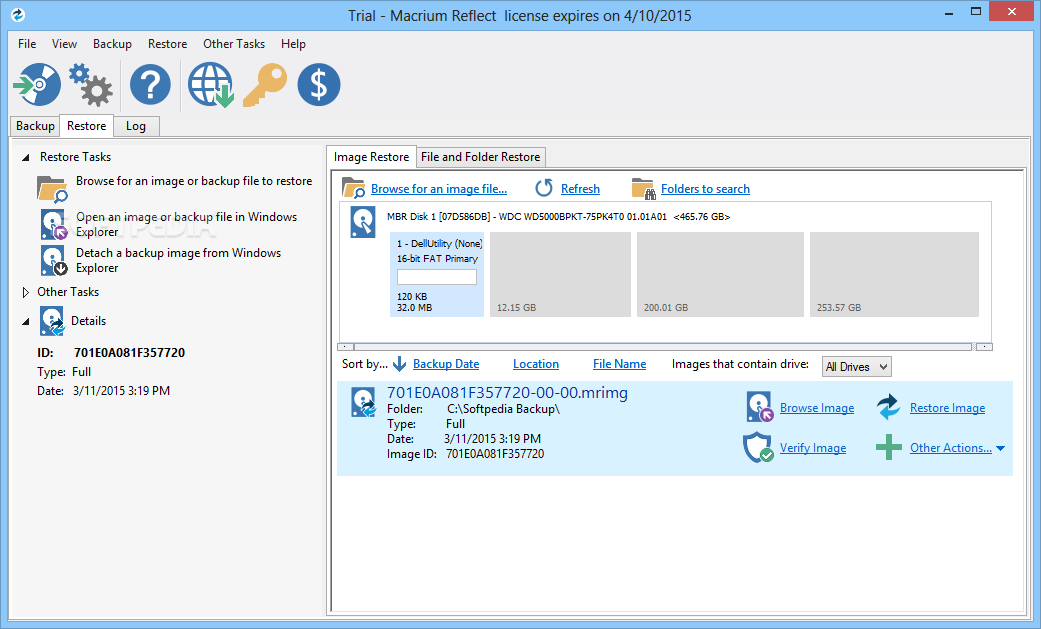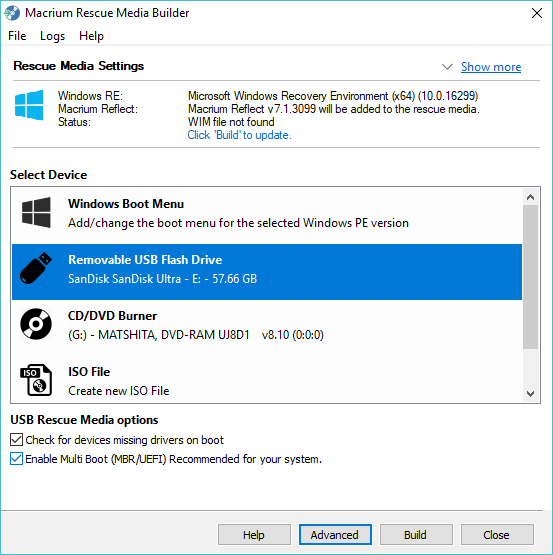

This is normal, and it is working as expected.<<

> Note: Some newer computers will only support "UEFI." It will not include an option for Legacy at all even with the latest BIOS version installed. Mine falls in the category described in the note below. It is also brand new and at the latest level of Dell BIOS as well.

It has no legacy booting capability at all. On the other hand, I have a newer Dell computer which supports "UEFI" booting only. This doesn't seem like very advanced thinking to me but I guess it is what it is. It will only permit MBR formatted rescue drives. Apparently, Macrium won't support GPT formatted drives. The first problem I ran into after starting it was in trying to create a rescue USB. Click Finish:Ģ.13) Macrium will now write new boot records.I am currently using Easeus ToDo and because of the number of recommendations I have gotten for Macrium Reflect Free, I decided to give it a try. Boot menu will only be shown by default when there are two or more operating systems to choose.Ģ.8) Edit allows you to manually change the path to selected OS, and change Windows version in case it is recorded wrong:Ģ.9) If you think an OS (Windows installation) which should be present is not found, you can browse your PC to find correct partition ID letter:Ģ.10) When you have found the path to missing Windows installation, click Add to add it:Ģ.11) When all operating systems have been found, click Next:Ģ.12) Macrium shows the summary of operating systems found. If only one OS is found or left after ignoring all others, no boot menu will be shown after boot records have been fixed, Windows booting automatically to only available OS. Selected OS will be ignored and not shown in fixed boot menu. Only two of these will be found by Macrium Rescue when selecting Fix Windows boot problems as shown in screenshot in step 2.6 because one of the four OS entries is a native boot VHD ( W10 PRO (VHD)), another ( W10 PRO (VMware)) being just a copy of my main OS entry ( W10 PRO (Hyper-V)) with different settings to allow me to run both Hyper-V and VMware virtualization programs on same PC, on same installation.Ģ.7) If you want to remove one of operating systems found, just select it and click Ignore: Macrium Rescue does not find operating systems installed on a native boot virtual hard disk, these you must add manually after boot issues have been fixed and you are able to boot to Windows desktop.Īlso if you have copied a boot menu entry of an existing physical Windows installation to be able to use the same OS installation with different settings, the copied boot entries will not be found and need to be manually added later.įor an example, see screenshot above in step 2.4 showing I have four OS entries in boot menu, in addition to Macrium Rescue.


 0 kommentar(er)
0 kommentar(er)
